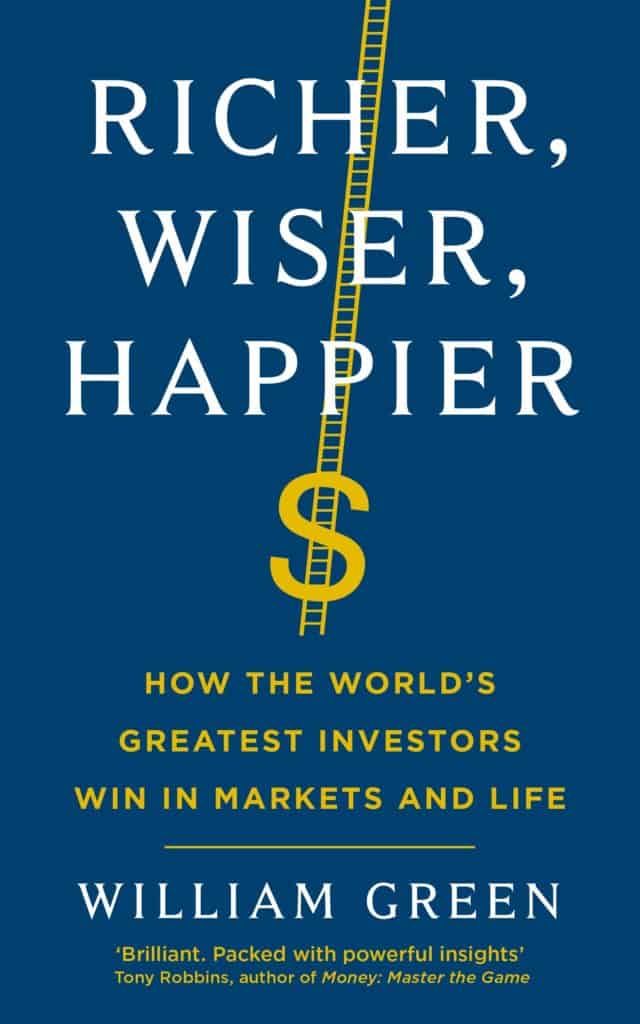There are few things that are so beguilingly simple yet devilishly complicated as investing in the stock market. There are but a few hundred stocks to choose from, a price to buy, and a price to sell – and that’s it. What could be simpler than that?
Of course, even the slightly informed would know that there are infinite combinations of these 3 variables and most of them don’t work. As with alchemy of the middle ages and casinos of the modern age, riches always seem so tantalizingly near yet far away.
However, unlike alchemy and gambling, there are people across the world who, through a mixture of smarts, luck, and very hard work, have solved this puzzle and are willing to share their methods with the world.
Can a regular Joe learn from them and implement those methods for himself? What would it take – what prerequisites are needed, what effort, and what mindset would it need to emulate the results of these dazzlingly successful people?
William Green thinks that the answer to the first question is in the affirmative, and tries to find out the answers to the remaining questions. His book, ‘Richer, Wiser, Happier’ is a compendium of profiles of successful investors who have mastered the art of investing and have the riches to show as proof.

Green himself says that the point of the book is to collect and present ‘ideas worth emulating’, and tries to distill the wisdom learned from these masters into lessons that can be learnt, and hopefully, followed.
The book profiles about a dozen or so investors – some in much depth, and some with a section or two. The investors profiled in depth are Mohnish Pabrai, Sir John Templeton, Howard Marks, Jean-Marie Eveillard, Nick Sleep (and Qais Zakaria), Joel Greenblatt, and Charlie Munger. Also profiled are Will Danoff, Tom Gayner, Jeff Vinik, Laura Geritz, and Paul Lountzis, with frequent asides about Bill Miller.
For a book that is all about emulating, the book starts off appropriately enough with the biggest emulator of them all – Mohnish Pabrai (whose recent YouTube video recommendation led me to this book). For folks who have read ‘The Dhandho Investor’ (reviewed here), there is not much new in this chapter, although one can get updated about his journey over the past 10 years since the earlier book was released (and learn a lot more about the charitable work he does in the education sphere in India).
In fact, one good thing about this book overall is that it is a very recent book – even post Covid market recovery gets good coverage – and as such is more current and fresh.
Green is a good story-teller, and the world of profitable investments is replete with stock picking stories that have ‘happily-ever-after’ endings. However, a pattern that can be seen throughout the book are stories that revolve around 3 or 4 major market events – the market boom and busts of early 1970s, the dot-com bubble, the 2008 crisis, and of course, the most recent, short-lived Covid panic and eventual (ongoing) bubble. Some stories go even further in the past – like with the venerable Templeton – who started investing right around the second world war.
As the book covers one investor after another, and one set of stories after another, something of a pattern emerges. None of these points below would be banner headlines or breaking news stories for a seasoned investor, but almost all methods or philosophies have these few traits in common:
- Paying attention to how much you pay – minimize your risk, have a margin of safety, buy at a discount to value. This theme is mantra in practically every chapter.
- Go contrary to the market – be greedy when others are fearful and vice versa
- Stay patient
- Do not try to predict the market.
Of course, every one of these is easier said than done (except the last one, probably). Buying at a discount to value implies you can figure out exactly what the true value of an enterprise is. Going contrary to the market requires nerves of steel, and staying patient through turbulence requires a titanium gut.
Going contrary to the market requires nerves of steel, and staying patient through turbulence requires a titanium gut.
Srikanth Meenakshi
And, while these are the similarities across investors, there are several differences as well. Some investors (Pabrai, Sleep) are no fans of diversification, while others (Templeton, Greenblatt, Danoff) seek safety in numbers. Leverage is anathema to some but par for the course for others, and same goes with shorting stocks. Some star investors are lone wolves while others have teams working for them. One idea sounds great to the author in one chapter while the opposite sounds equally good in another.
Where the book shines really is, rather perversely, in telling investors what not to do. All the featured investors have eloquent quotes about what mistakes to avoid (there is a whole chapter allotted to not being “a fool”). None more succinct than this from Greenblatt – “Choosing individual stocks without any idea of what you’re looking for is like running through a dynamite factory with a burning match. You may live, but you’re still an idiot.”
At the end of the day, if the author’s aim was to communicate that investing is hard, he has done a bang-up job. If you cannot go through all the toils of these men (and a lone woman), you are better off coloring inside the lines and indexing your money – that’s the takeaway.
As Aarati Krishnan wrote eloquently in her recent article on multibaggers, investing in stocks is hard work, and requires luck and emotional fortitude.
The book is not just about getting richer – it is also about getting wiser and happier, and on these grounds the content is rather weak. I’d rather not hear from multi-millionaires how to lead a life of tranquility and contemplation.
All in all, the book is certainly an interesting read – it’s hard to get profiles of successful investors delivered in such a succinct package. It’s filled with stories of triumph and inspiring possibilities.
If you are a beginner investor and seek to learn the guardrails of investing, you should read this book to understand the basic principles of investing – especially what not to do. However, if you are in the market already, and looking for ideas or methods that you can emulate for supersized successes, I’m afraid those would be hard to come by. As the book notes, you would need to learn the methods of the masters, internalize it, and try to adapt it to your own self.




11 thoughts on “Richer, Wiser, Happier – Ideas to emulate”
Cool review, thanks !
Hi
Excellent review !
Just a query, did Willian Green wrote this in his book or did you write this in your review :
“..the most recent, short-lived Covid panic and eventual (ongoing) bubble..”
🙂
Regards
Raspreet
🙂 That was me…but hey, I wrote this review a while ago…
A while ago ? Covid started in India in Mar-Apr-20, and the market hasn’t stopped rising since then. So you feel ‘the ongoing bubble’ is still ongoing and becoming bigger 🙂 ? Is that the Prime Investor official view 😀 ?
Sir, sir, don’t read too much into it…official Prime views are from V/B/A only 🙂
😀 😀
Then I’d like V’s view on your view, let’s see what she has to say in this matter..
😀
Matter adjourned until market speaks for itself 😊thanks, Vidya
People nowadays are more interested in actionable ideas rather than philosophy of investing
Because each book on investing revolves around almost same principles
Wisdom is rare indeed
Nice writeup as usual. Should people who have been investing for a long time, buy this book? Wondering if there are nuggets that are worth internalizing. I loved the Psychologoy of money, even though, most were just known lessons!!
Thanks. I would say ‘yes’ – there are many pieces of wisdom and nifty aphorisms in the book that are worth internalising. Sometimes just a simple habit or policy practice that these veteran investors have may spark a thought in us about our own behaviour.
Comments are closed.